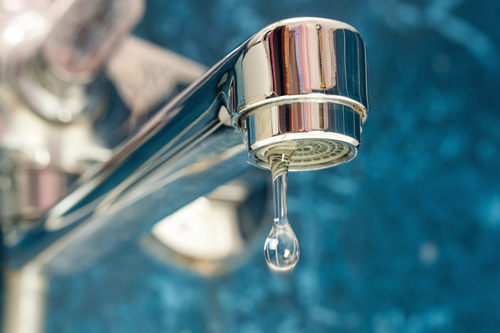Access to safe drinking water is undeniably crucial for our well-being. Unfortunately, the water that we receive through our taps may not always meet the standards of purity we expect. This article takes a comprehensive look at the prevalent contaminants present in tap water, uncovering their potential health hazards, origins, adherence to regulatory guidelines, techniques for monitoring, and measures to safeguard the cleanliness of our tap water supply. Understanding these aspects is vital in ensuring that the water we consume and use daily is free from harm and meets the necessary safety standards.
Common Contaminants in Tap Water
When we turn on the tap to quench our thirst or cook a meal, we often take for granted the purity of the water flowing into our homes. However, the reality is that tap water can sometimes hide a range of contaminants that may pose health risks.

Microbial Contaminants
- Microbes like bacteria, viruses, and protozoa can infiltrate our water supply through various channels, including sewage and agricultural runoff.
- Bacteria such as E. coli and coliform bacteria can cause gastrointestinal illnesses upon consumption.
- Viruses like norovirus and hepatitis A can lead to severe illnesses, particularly in areas with inadequate water treatment.
- Protozoa like Giardia and Cryptosporidium, resilient to chlorine disinfection, can result in gastrointestinal problems.
Chemical Contaminants
A vast array of substances falls under the umbrella of chemical contaminants, including chlorine, heavy metals (e.g., lead and arsenic), and pesticides and herbicides.
- Chlorine, with its byproducts, can affect water taste and odor and may contribute to respiratory issues.
- Heavy metals, such as lead, mercury, and arsenic, can accumulate in the body and lead to long-term health concerns.
- Pesticides and herbicides from agricultural runoff can infiltrate water sources and have been associated with various health issues.
Physical Contaminants
- Physical contaminants are visible particles or substances in water.
- Sediments and particulate matter can impact water clarity and may harbor harmful microorganisms
- Turbidity, indicating water cloudiness, can compromise water quality and often accompanies other contaminants.
Radiological Contaminants
Radiological contaminants involve substances emitting ionizing radiation, like radon and uranium. Extended exposure can heighten cancer risk.
Health Implications of Contaminated Tap Water
Contaminated tap water can engender both short-term and long-term health repercussions. Short-term effects may encompass gastrointestinal distress, skin afflictions, and respiratory discomfort. Prolonged exposure to specific contaminants has been linked to cancer, developmental problems in children, and neurological impairments.
Sources Of Tap Water Contaminants
Diverse origins contribute to contaminants in tap water:
- Natural Sources: Some contaminants, like minerals and radon, occur naturally in water sources.
- Agricultural Runoff: Pesticides, herbicides, and fertilizers from farming activities can seep into water sources.
- Industrial Pollution: Effluents from factories and industrial processes can introduce chemical contaminants.
- Aging Infrastructure: Aging water pipes can leach metals like lead into the water supply.
- Cross-Contamination: Contaminants from one source can cross-contaminate other water sources, affecting both groundwater and surface water.
Regulatory Bodies and Water Quality Standards
To ensure safe tap water, regulatory bodies such as the Environmental Protection Agency (EPA) in the United States and the World Health Organization (WHO) have established guidelines and standards for water quality. These standards establish limits for various contaminants, aiming to safeguard public health.
Testing And Monitoring Tap Water Quality
Monitoring the quality of tap water is crucial to ensure its safety. This can be accomplished through various methods:
- Home Water Testing Kits: These kits empower consumers to assess water quality and detect common contaminants.
- Municipal Water Testing: Water treatment facilities routinely monitor and test the water supply to ensure compliance with regulatory standards.
- Independent Laboratory Testing: Independent laboratories offer comprehensive water quality testing for a broad spectrum of contaminants.
Water Treatment and Filtration Solutions
Municipal water treatment processes play a pivotal role in eliminating contaminants from the water supply. These processes include coagulation, sedimentation, filtration, and disinfection.
In addition to municipal treatment, individuals can take measures to further purify their tap water. Point-of-use (POU) and point-of-entry (POE) water filtration systems can remove specific contaminants. Various water purification methods, such as reverse osmosis and activated carbon filtration, are also available.
Steps To Ensure Safe Tap Water
To guarantee safe tap water at home, consider the following measures:
- Regularly Change Filters: Follow the manufacturer’s recommendations for filter replacement if you use a water filtration system.
- Flush Pipes: Running the tap for a few minutes in the morning can eliminate stagnant water.
- Stay Informed: Keep abreast of water quality reports provided by your water utility company and adhere to any recommended precautions.
Ensure the Quality of Your Tap Water with Atlantic Blue Water Services
Access to clean tap water is crucial for our well-being. Understanding water contaminants, their sources, and health effects empowers informed choices. Vigilance, water quality monitoring, and proper treatment ensure safe tap water at home.
For reliable water testing, choose Atlantic Blue Water Services. We’re committed to delivering pure water and offer comprehensive well water tests using advanced methods for your peace of mind. Contact us at 410-840-2583 to support a healthier water supply. Our team safeguards water quality, impacting your well-being and happiness positively.
